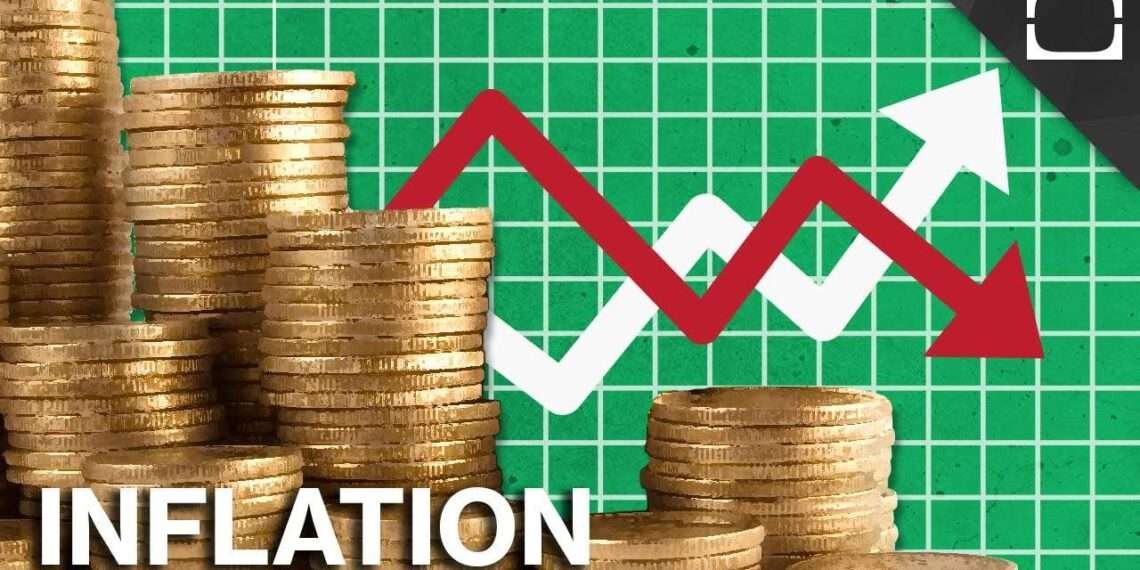Inflation has experienced a decline on four consecutive occasions as November registered a rate of 26.4%.
This marks a notable 8.8% point reduction from the 35.2% reported in October 2023. The recently released Consumer Price Index (CPI) data on Thursday, December 14, revealed a year-on-year food inflation of 32.2% and a non-food inflation of 21.7%.
Government Statistician Professor Samuel Kobina Annim, in emphasizing the rates, pointed out that Western region recorded the highest inflation rate at 39.8%, while the Greater Accra region reported the lowest inflation rate at 19.8%.
“From a Food and non-food perspective, we saw a 10.4 percentage rate difference with food inflation of 32. 2 inflation relative to 21. 7 for November 2023. The decline in food inflation was massive to non-food inflation with food inflation dropping by 12.6 Percent while non-food inflation dropped to 6. 0 percent.
“From the locally produced items and imported items perspective, we recorded a 1.0 percentage point as we continue to see the dominance of imported items inflation recording a relatively higher inflation of 21. 7 percent relative to locally produced items of 26.1 percent for November.”
Professor Samuel Kobina Annim
The Inflation-Price Conundrum: Unveiling The Misconception
In Ghana, the public often misconceives the relationship between inflation and consumer prices. It’s a common misconception to assume that a fall in inflation necessarily translates to a decrease in prices. However, unraveling this conundrum reveals that the dynamics between inflation and the cost of goods are more nuanced and can be influenced by various factors.

Inflation, by definition, is the rate at which the general level of prices for goods and services is rising, eroding purchasing power. It is commonly expressed as a percentage, reflecting the annualized percentage change in a basket of goods and services. When inflation falls, it means the rate of price increase is slowing down, but it doesn’t necessarily imply an outright reduction in prices.
Several factors contribute to this apparent paradox. First and foremost is the concept of “core inflation,” which excludes volatile items like food and energy. Even if overall inflation decreases, core inflation might remain stable or continue to rise. This can be particularly significant as necessities like food and energy often exhibit price volatility, creating a scenario where overall inflation may decrease while essential costs persistently climb.
Moreover, the global nature of markets plays a crucial role. A fall in inflation in one region doesn’t guarantee a corresponding decline in prices across the board. International economic dynamics, including supply chain disruptions, geopolitical events, and exchange rate fluctuations, can all contribute to the complex pricing landscape. For instance, a decrease in inflation might be offset by an increase in the cost of imported goods, maintaining or even elevating consumer prices.
Additionally, businesses may respond to changes in inflation differently. If they have faced increased production costs due to factors like rising wages or raw material prices, they might pass those costs on to consumers despite an overall reduction in inflation. Companies may prioritize maintaining profit margins over immediately reflecting lower inflation in the prices of their products and services.

Inflation and pricing are also influenced by consumer behavior. Expectations and perceptions about future price movements can impact current pricing strategies. If consumers anticipate lower prices in the future due to falling inflation, they may delay purchases, leading businesses to adjust their pricing strategies accordingly.
Therefore, the inverse relationship between inflation and prices is not as straightforward as it might seem at first glance. A fall in inflation does not guarantee a parallel reduction in prices. Instead, the interplay of various factors, including core inflation, global market dynamics, business responses, and consumer expectations, contributes to the intricate relationship between these economic indicators.
Understanding these complexities is crucial for policymakers, businesses, and consumers alike, allowing for informed decision-making in the ever-evolving Ghanaian economic landscape.
READ ALSO: The Receding Powers Of Chiefs In Ghana



















